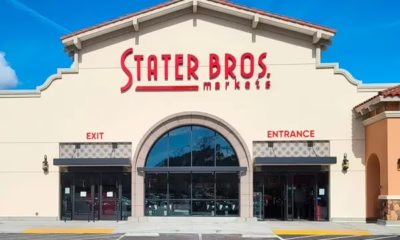Fresh Produce
More Packaging Choices Are Complicating Produce Handling

How Produce Packaging Complexity Challenges Freshness and Efficiency
Packaging Decisions Grow More Complicated for Merchandisers
As sustainability demands rise, produce packaging complexity continues to challenge retailers. With more materials and formats available, decision-making becomes harder.
Retailers must now consider multiple factors such as durability, cost, sustainability, and compliance. This creates significant pressure to choose the right solution.
Packaging Must Protect Quality from Farm to Shelf
Protective packaging plays a critical role in keeping fruits and vegetables fresh during transport and shelf display. However, choices can be overwhelming.
Retailers must weigh options like molded trays, foam nets, and absorbent pads. These materials help prevent bruising and breakage during transport.
But padding is just one part of the equation. Ventilation, oxygen flow, and moisture control also affect produce longevity and visual appeal.
Each fruit or vegetable type requires a specific approach. Failing to tailor the packaging risks damage, waste, and lower customer satisfaction.
Sustainability Adds Layers to Packaging Choices
The push for sustainability has added new challenges. Merchandisers now balance environmental impact with product protection and customer expectations.
Eco-conscious consumers seek biodegradable, compostable, and plant-based options. However, those solutions may not always support shelf life or transport safety.
Additionally, smart packaging and regulatory compliance further increase produce packaging complexity. Navigating these pressures requires research and adaptability.
Blommaert of NSF recommends engaging suppliers that focus on green innovation. Partnering with them helps businesses keep pace with evolving standards.
Shelf-Life Testing Helps Avoid Costly Errors
Mistakes in material choice can cause spoilage, waste, and lost profits. Retailers often underestimate how packaging affects different produce types.
Non-breathable materials may trap gases and moisture, shortening freshness. Understanding how each fruit behaves post-harvest leads to better packaging results.
Shelf-life testing remains essential. Regular assessments can identify which solutions actually preserve freshness while supporting sustainability goals.
Operators should track how materials perform and update their strategies accordingly. Testing ensures informed decisions rather than guesswork.
Adapting to the Future of Produce Packaging
The future will bring lighter, reusable, and minimalist packaging. These trends respond to both environmental concerns and supply chain efficiency.
Plant-based and compostable materials will gain popularity. Yet retailers must stay flexible and open to innovation to meet modern demands.
Ultimately, overcoming produce packaging complexity means balancing technology, customer values, and fresh food protection in one unified strategy.











